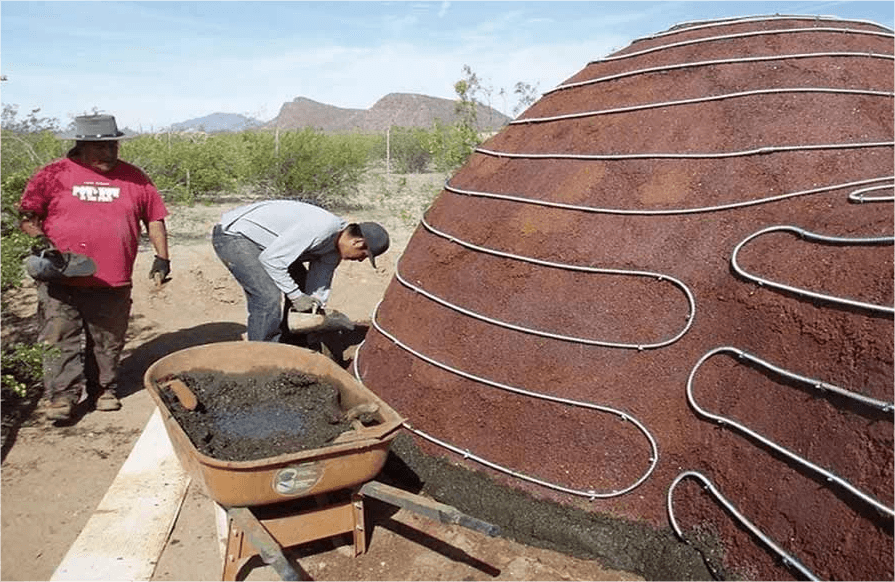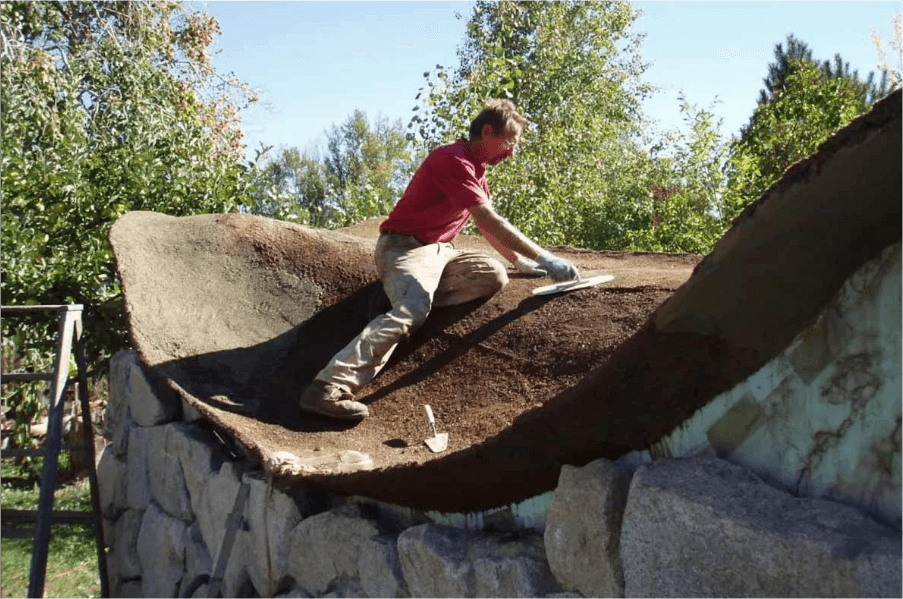📑Table of Contents:

In the search for more sustainable construction materials, a new material called Ferrock has emerged as a potential game-changer. This innovative material is quickly gaining attention in the building industry due to its environmental benefits, strength, and unique properties. Made primarily from recycled materials, Ferrock not only has a significantly lower carbon footprint than traditional concrete, but it also possesses some extraordinary qualities that make it an excellent alternative in various construction projects. In this blog post, we will delve into the science behind Ferrock, its applications, and why it may hold the key to a more sustainable future in construction.
What is Ferrock?
Ferrock is a composite material made from recycled steel dust, a byproduct of industrial processes. This dust, when combined with other natural materials such as silica and carbon-rich materials, forms a concrete-like substance that hardens and strengthens over time. It mimics concrete in many ways but is far more sustainable and environmentally friendly.
One of the most remarkable features of Ferrock is that it absorbs CO2 as it cures, thereby reducing the material’s overall carbon footprint. This stands in stark contrast to traditional concrete, which releases large amounts of CO2 into the atmosphere during its production.
The Environmental Benefits of Ferrock
Ferrock has several environmental advantages over conventional construction materials, especially concrete. Here’s a closer look at why it stands out:
1. Lower Carbon Footprint
Traditional concrete production is one of the leading causes of global CO2 emissions, accounting for nearly 8% of total emissions worldwide. The process of manufacturing cement, a primary ingredient in concrete, releases substantial amounts of CO2. Ferrock, on the other hand, has a much lower carbon footprint. This is mainly because its production uses recycled steel dust, which would otherwise end up as waste, and it absorbs CO2 during the curing process. As it sets, Ferrock traps carbon, helping to mitigate some of the harmful effects of CO2 emissions.
2. Recycled Materials
Ferrock’s composition relies heavily on industrial waste, particularly steel dust, which is a byproduct of steel production. Instead of sending this waste to landfills, it is repurposed into a valuable building material. This not only helps reduce the environmental impact of steel production but also contributes to the circular economy, where waste is minimized and resources are reused.
3. Durability and Strength
Ferrock is stronger than conventional concrete, especially when exposed to harsh environmental conditions. While concrete can crack and degrade over time, Ferrock has shown a remarkable ability to withstand wear and tear. Its resistance to moisture, cracking, and chemical erosion makes it an ideal material for infrastructure, buildings, and roads that are exposed to the elements. Its longevity means fewer resources are required for maintenance and repair over time, further reducing its environmental impact.
How Ferrock Works: The Science Behind the Material
Ferrock’s ability to absorb CO2 and its durability come from the unique chemical reactions that occur during its curing process. Here’s a basic overview of how Ferrock works:
1. Steel Dust and Silica Reaction
The key to Ferrock’s strength lies in the reaction between steel dust, silica (a component found in sand), and other carbon-rich materials. When mixed, these elements undergo a chemical reaction that creates a bond stronger than that of conventional concrete. The result is a solid, durable material with superior strength and resistance to environmental stresses.
2. Carbon Absorption During Curing
One of the most remarkable aspects of Ferrock is its ability to absorb CO2 as it sets. When the material is exposed to air and moisture, it undergoes a curing process that traps CO2 within its structure. This means that instead of emitting CO2 during the production process, Ferrock acts as a carbon sink, actually helping to reduce greenhouse gas concentrations in the atmosphere.
This carbon-absorbing property makes Ferrock an even more sustainable option than other green building materials, as it not only reduces emissions but also helps to mitigate the existing levels of CO2 in the environment.
Applications of Ferrock in Construction
While Ferrock is still in the early stages of widespread adoption, it has already shown great potential in various construction applications. Here are some of the most promising uses for this innovative material:
1. Paving and Road Construction
Ferrock’s durability and resistance to cracking make it an ideal material for paving roads and constructing infrastructure. Unlike traditional concrete, which can suffer from surface degradation over time, Ferrock is highly resistant to moisture and chemical corrosion. This makes it a great choice for roads, highways, and other public infrastructure projects that require durability in harsh environmental conditions.
2. Building Foundations
Ferrock’s strength and longevity make it a viable option for building foundations. Whether for residential or commercial structures, Ferrock can provide the solid base needed for a wide variety of buildings. Its superior resistance to environmental stressors, such as moisture and chemicals, ensures that foundations made from Ferrock will last longer without the need for frequent repairs.
3. Art and Decorative Features
Due to its aesthetic appeal, Ferrock is also being used for artistic purposes and decorative features. The material can be molded into various shapes and textures, making it suitable for sculptures, landscaping, and architectural elements. Its ability to be customized and its environmental benefits make it a popular choice for those looking to incorporate sustainable materials into their designs.
4. Green Building Projects
As sustainability becomes more important in the construction industry, Ferrock is being considered as an eco-friendly alternative for green building projects. Its ability to absorb CO2 and utilize recycled materials makes it an attractive option for architects and builders seeking to minimize their environmental impact. Ferrock can be used in conjunction with other sustainable materials, such as bamboo or reclaimed wood, to create buildings that are both environmentally friendly and structurally sound.
The Future of Ferrock in Construction
Ferrock’s potential in the construction industry is immense. As demand for sustainable building materials grows, Ferrock could become a mainstream option for a wide range of applications, from roads to high-rise buildings. The material’s ability to absorb CO2 during its curing process and its reliance on recycled steel dust make it a key player in the push for greener, more sustainable construction practices.
However, there are still challenges to overcome. The production of Ferrock is still relatively new, and scaling up to meet global demand will require further research and development. Additionally, while Ferrock’s strength and durability are impressive, more long-term studies are needed to determine its full potential in different climates and applications.
Despite these challenges, the future of Ferrock looks promising. With continued innovation and investment in sustainable building practices, Ferrock could play a crucial role in reducing the carbon footprint of the construction industry and helping to create a more sustainable future for all.

Conclusion: Ferrock’s Role in Sustainable Construction
Ferrock is an innovative material with the potential to revolutionize the construction industry. By offering a sustainable, carbon-absorbing alternative to concrete. It provides a creative solution to the environmental challenges posed by traditional building materials. With its strength, durability, and ability to repurpose waste, Ferrock is a game-changer for the future of construction.
As we continue to explore new ways to reduce our environmental impact, Ferrock stands as a shining example of how innovation can lead to more sustainable and efficient solutions. The building industry is on the cusp of a major transformation, and Ferrock could play a vital role in shaping a greener, more sustainable future.





